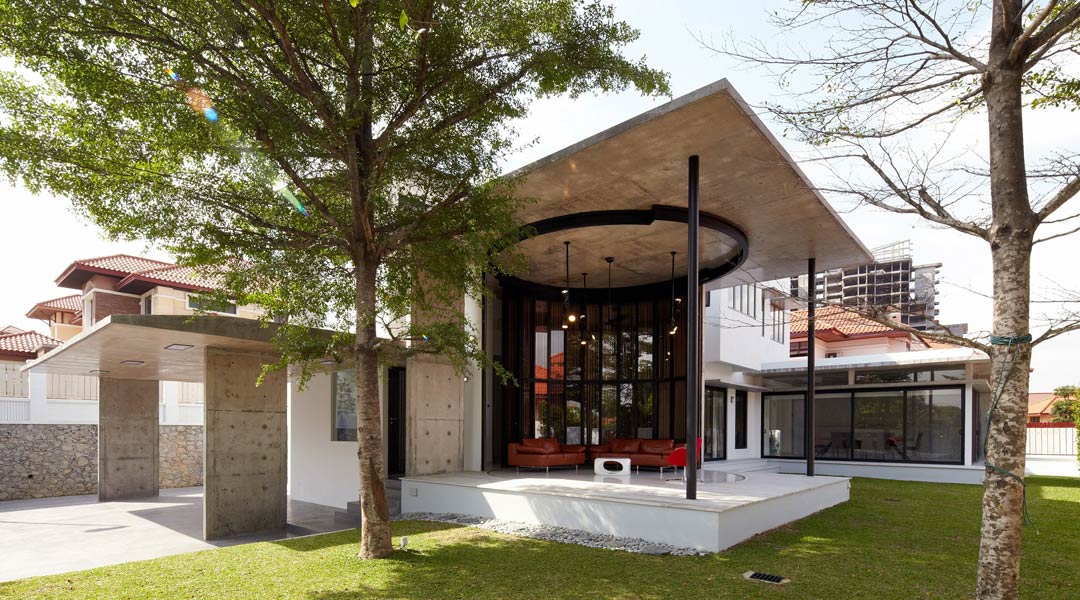
The Edges of Transformation: a renovation with postmodern hints
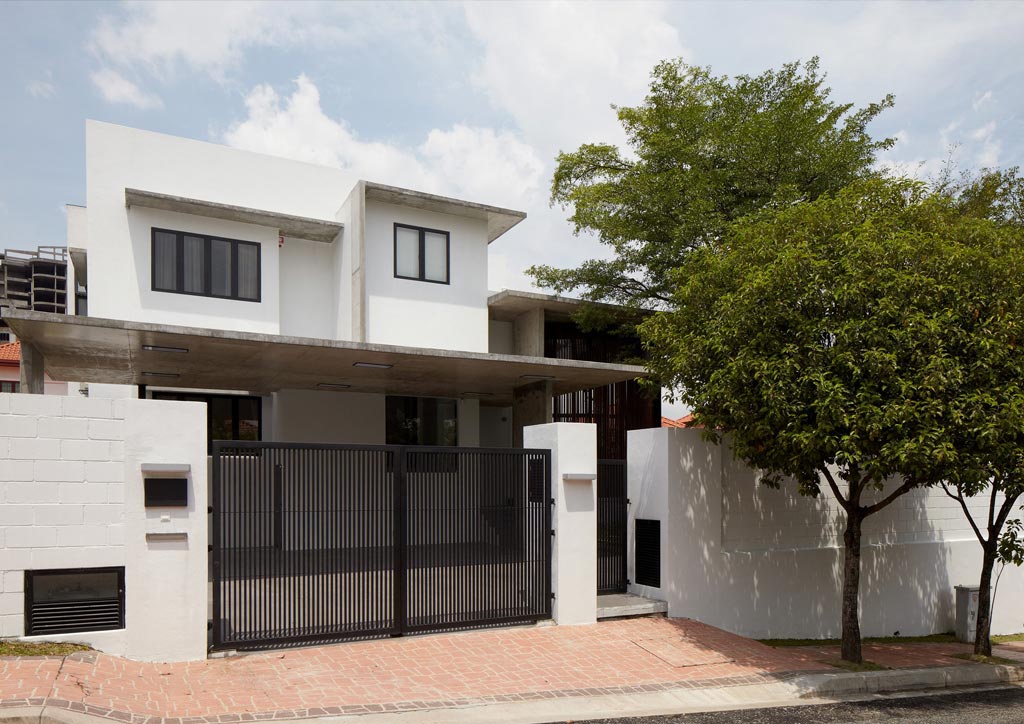
In his earthy T-shirt and pale shorts, Malaysian architect Fabian Tan seemed to absorb the light modestly in his craftily designed home-office in one of the suburbs of Kuala Lumpur. His office is bare, laid out in surfaces so tactile one would draw colors from its touch. The sobriety of the interior is intermittently disrupted by one’s delight of cleverly designed niches or a hole-in-the-floor for which to house one’s sandals. Tan derives great pleasure in seeing the faces of visitors when he informs them that this home-office was once just the archetypal single storey terrace house, and so he should. One too many people have been so oppressed with the idea that the great Malaysian terrace house is a typology decidedly fossilized and unable to evolve.
From the home-office I was then brought to the Voilà House. This project is Fabian Tan’s earliest journey in his questioning of the Malaysian housing typology. A renovated Malaysian bungalow house, it has won appreciation for its cleverly designed transformation rooted in the historical process of the modern tropical house. Like many urban centers across Asia, Kuala Lumpur created new suburbs of satellite cities in its outer ring during the post-independence era. Swathes of residential neighborhoods were created, and through this, the process of experimentation quickly concretized in the 1960s. The enormous building projects ossified the fluidity of design discourse and finally created a set of well-received modern house archetypes. The Malaysian bungalow is one of these typologies and from which the Voilà House arose.
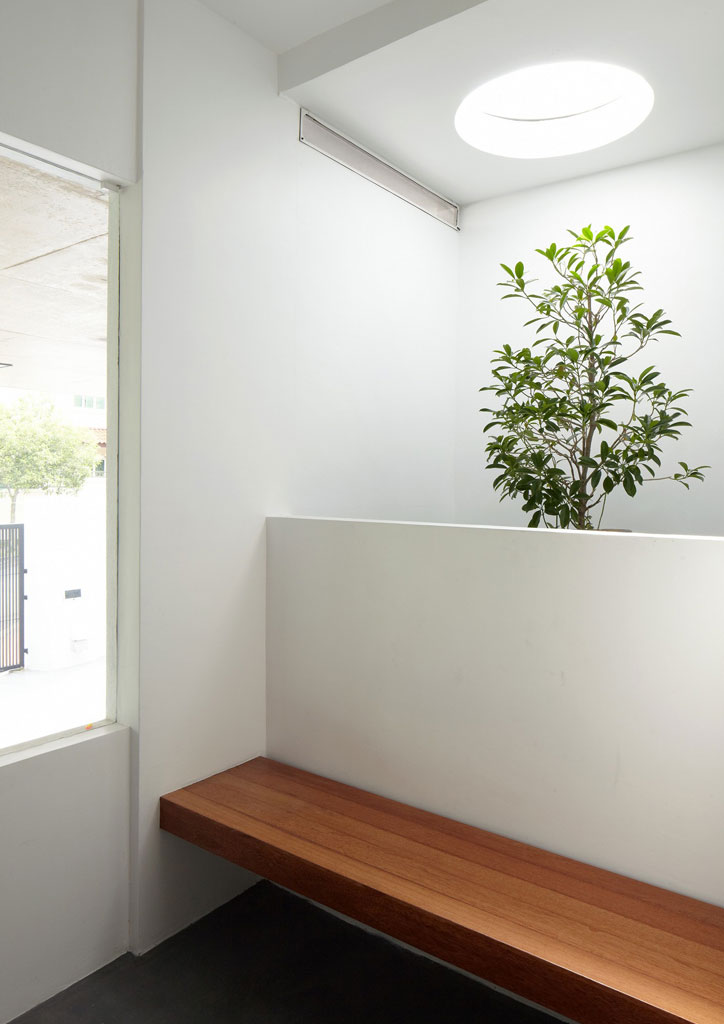
Located in a fairly recent neighborhood of the outer suburbs, the original design of the house was a manifestation of this typology—a sprawling plan evolved from the Anglo-Indian bungalow of the British era—an elevation bedecked with postmodern eclecticism ranging from Mediterranean-inspired orange roof clay tile to a façade that suggests a curious mix of Balinese and Sri Lankan regionalism, as well as incredulity to classical Western proportions. It was a living imagination of that Malaysian Dream among the bourgeoisie—its unearthly orange and brown tones of plaster and paint spoke a confirmation that this is the tropical palatial paradise as imagined by all. Tan turned this postmodern dream into a disciplined program but keeping some of that postmodern incredulity and play.
The site is a rectangular flat plot of land located in a typical bungalow neighborhood of lots in almost exactly the same shape and square footage (form follows finance here religiously). Like all Malaysian bungalows, it is comfortably detached from the street from which one arrives at the garage. And this is where the stable of vehicles is parked neatly. Tan transformed the heavy traditional pitched roof of the garage into an invisible modernist line on the façade.
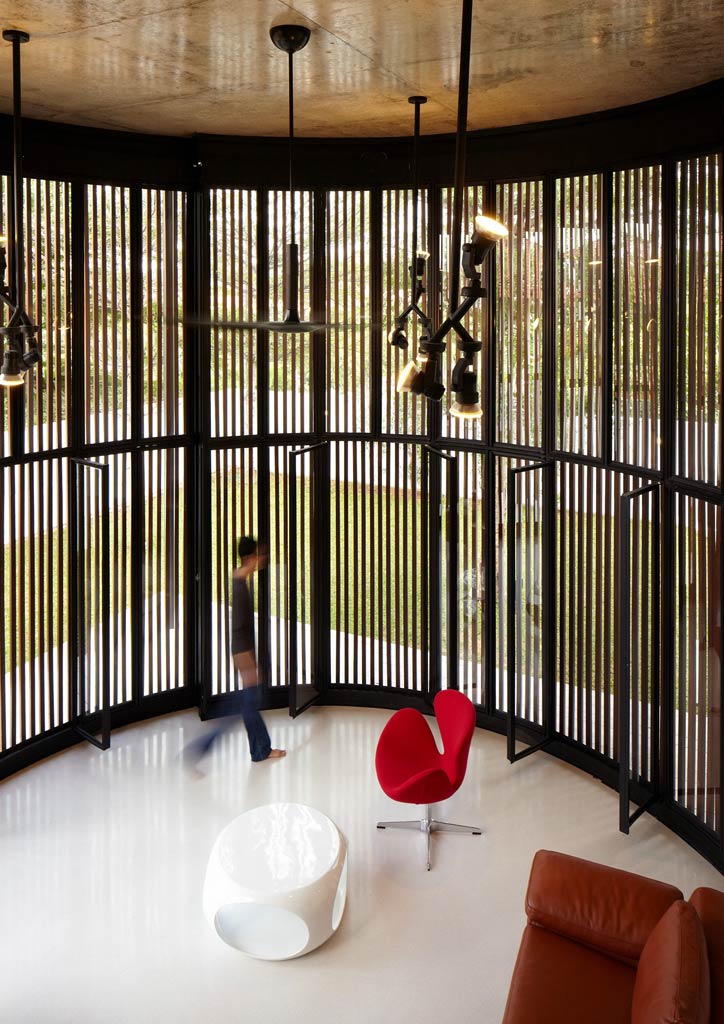
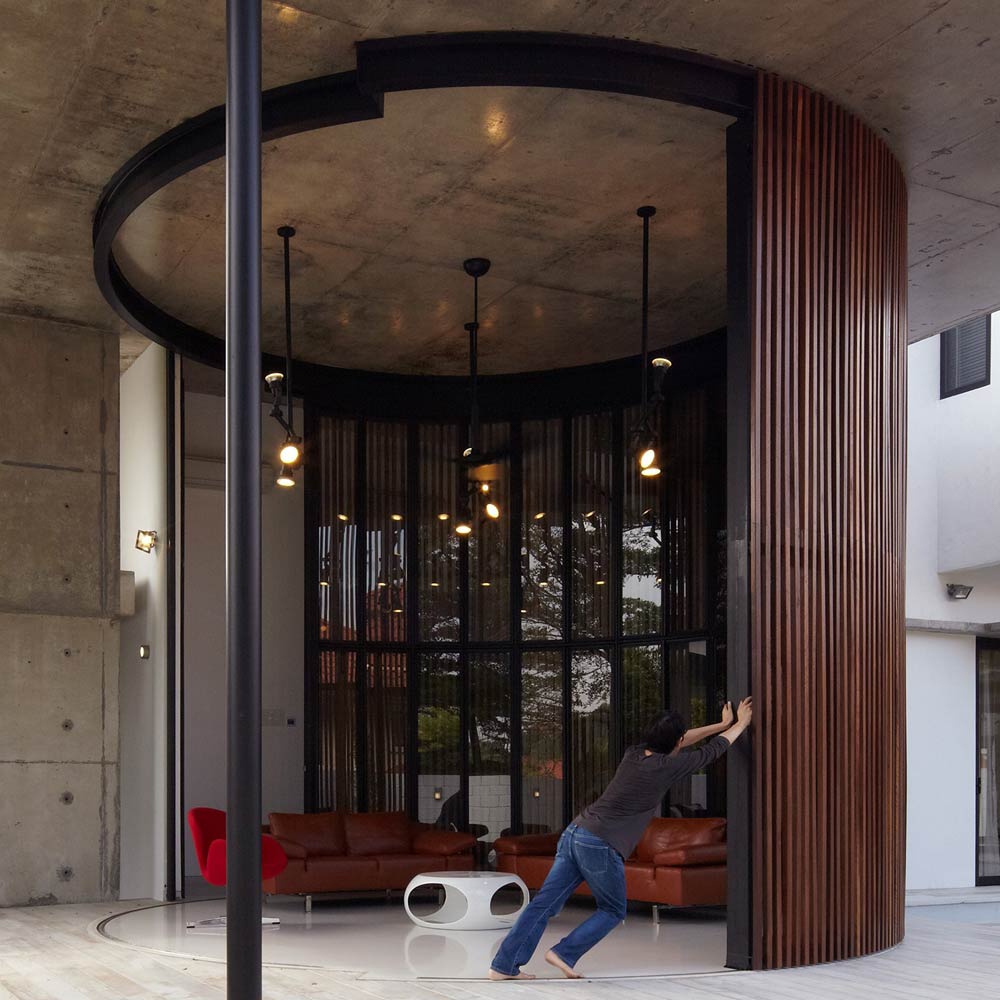
A small staircase finished with polished concrete protrudes out of the now bare-white façade intuitively nudging one to the niche where one is greeted by a steely, sleek industrial door. Upon entry into the vestibule, however, one cannot help but to pause at the sight of a Mandarin tree—a symbol of good fortune—sitting under an oculus. Another door awaits, but this time it is a warm emphatic solid timber door. Even here, Tan had already beautifully articulated the original bungalow typology with a space that reminds us of the seminal courtyards of the 33rd Lane House by Geoffrey Bawa.
The tropical regionalism, however, stops there. Fabian Tan’s Japanophilia lies bare when one enters the house properly. An invisible central spine was created out of the original plan, softly imposing a discipline on the sprawl. At the far end of the visual line is another potted Mandarin tree awash with light and slowly drawing its pull on any visitor that stands at the entrance door. The formerly clutter is now a domestic temple of clarity and simple lines. The furniture, comprised of Japanese light pastel brown tones, is sparsely arranged.
This aesthetic is, of course, further elaborated in the architect’s more recent works, particularly in his clever placing of windows. Privacy and control of direct sunlight is done without the appendage of curtains. Big windows are placed on lower portions of the wall, or hidden in niches flooding the space with neutral and uniform, warm tropical light. As one is further drawn into house, the dining annex reveals itself. This simple longitudinal box with its large concrete overhang is lit by a warm tangerine tint, an idea Tan develops further in his other projects, in particular the Knikno House (completed 2017).
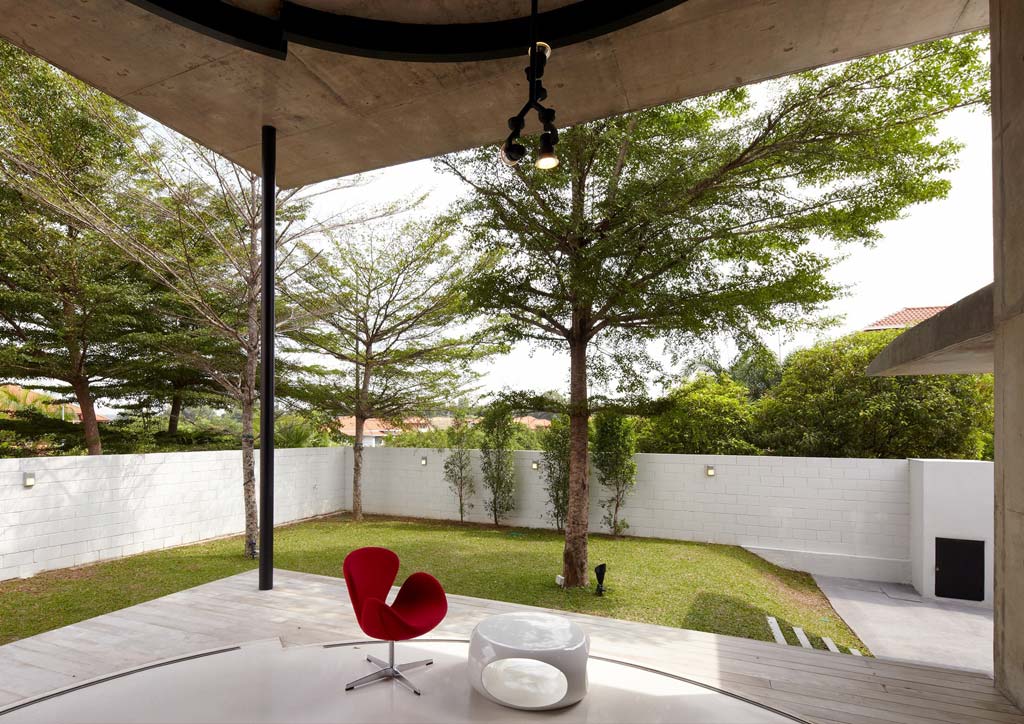
The main feature of the house, however, is the fascinating circular drawing room. It is a playful new extension of the original house, which took inspiration from the large Bucida trees on the existing site. The movable curved wall transforms the room from an annex into an outdoor garden pavilion. In plan it is evident that even the size of this circular drawing room was taken from the diameter of the nearest crown, although the architect did not just have that in mind. The location is decided by the view of the garden and the fortuitous natural shade that it provides. Moreover, the curvature of the round movable walls is a result of consideration of maintenance and harmony within the overall geometry of the floor plan. Initially, the conservative clients resisted the idea but the architect managed to convince them in a series of fascinating anecdotes, which deserve a place, perhaps, in a book on the social history of construction. It is a world away from the order and simplicity of the house and a reassertion of the incredulity of the postmodernism: playful, indulgent, unself-conscious, technological, and simply an enjoyable spatial experience.
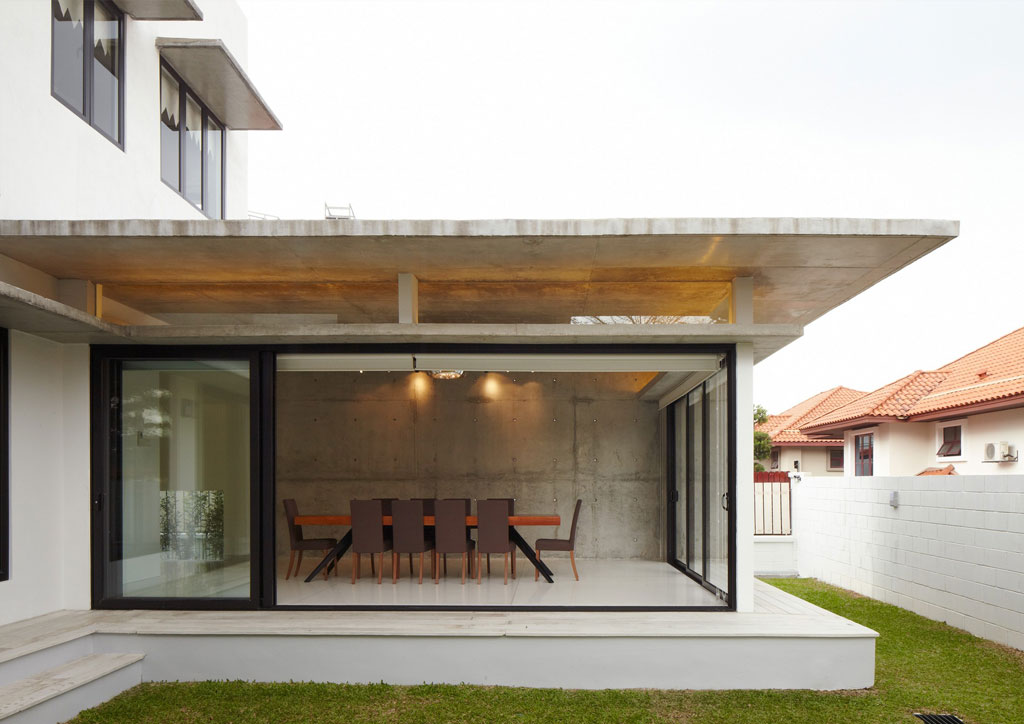
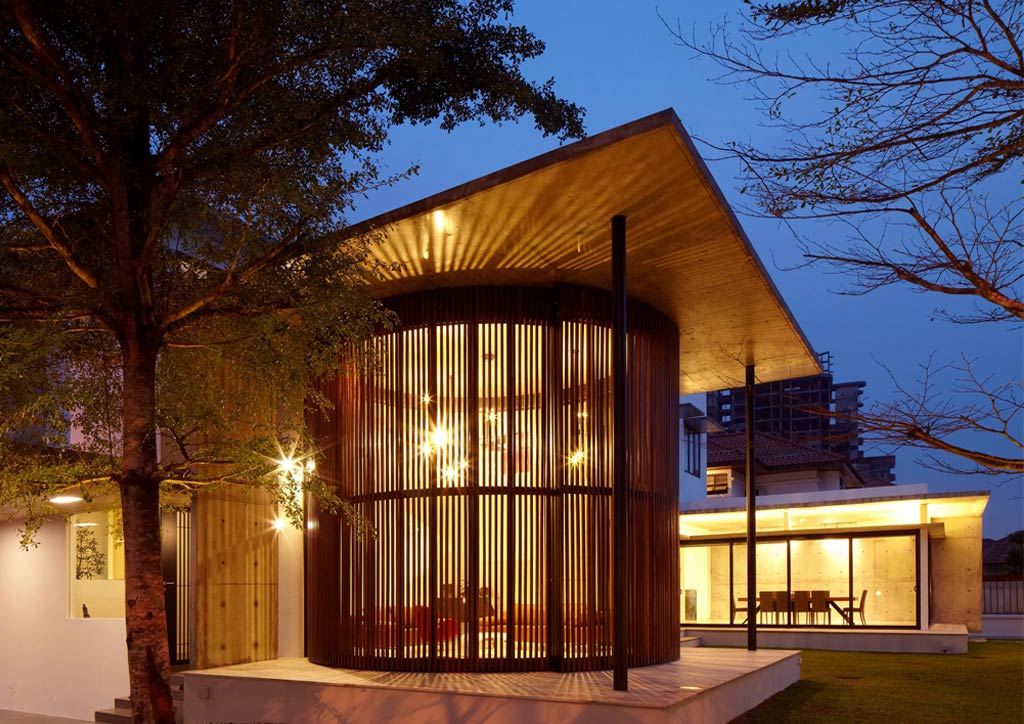
In the local context of residential architecture, this aesthetic is a striking anomaly. A cursory look at the critically acclaimed houses of late one cannot help but notice that the raw-brick, organic ruin aesthetic has become the order of the day. Of course, without reducing these great award-winning designs into caricatures, Fabian Tan’s bright clinical simplicity if unique in the country’s creative atmosphere.
More importantly, if we go deeper into methodology and approach, these stylistic distinctions are superficial. Houses of all typologies (and even architectural discourses in general) are departing away from the ruinous debates on styles and also national architectural identity. The Voilà House is a part of this growing return to an earlier kind of postmodernism in Malaysia. One is that is less seduced by identity politics, but rather, more interested in questioning well-established models of existing architecture, responding to the new economic condition of scarcity, as well as new modes of urban living. ![]()
This article first appeared in BluPrint Vol 1 2018. Edits were made for BluPrint online.
Photographed by Eiffel Chong
READ MORE: Palpable geometry in Fabian Tan Architect’s Knikno House


